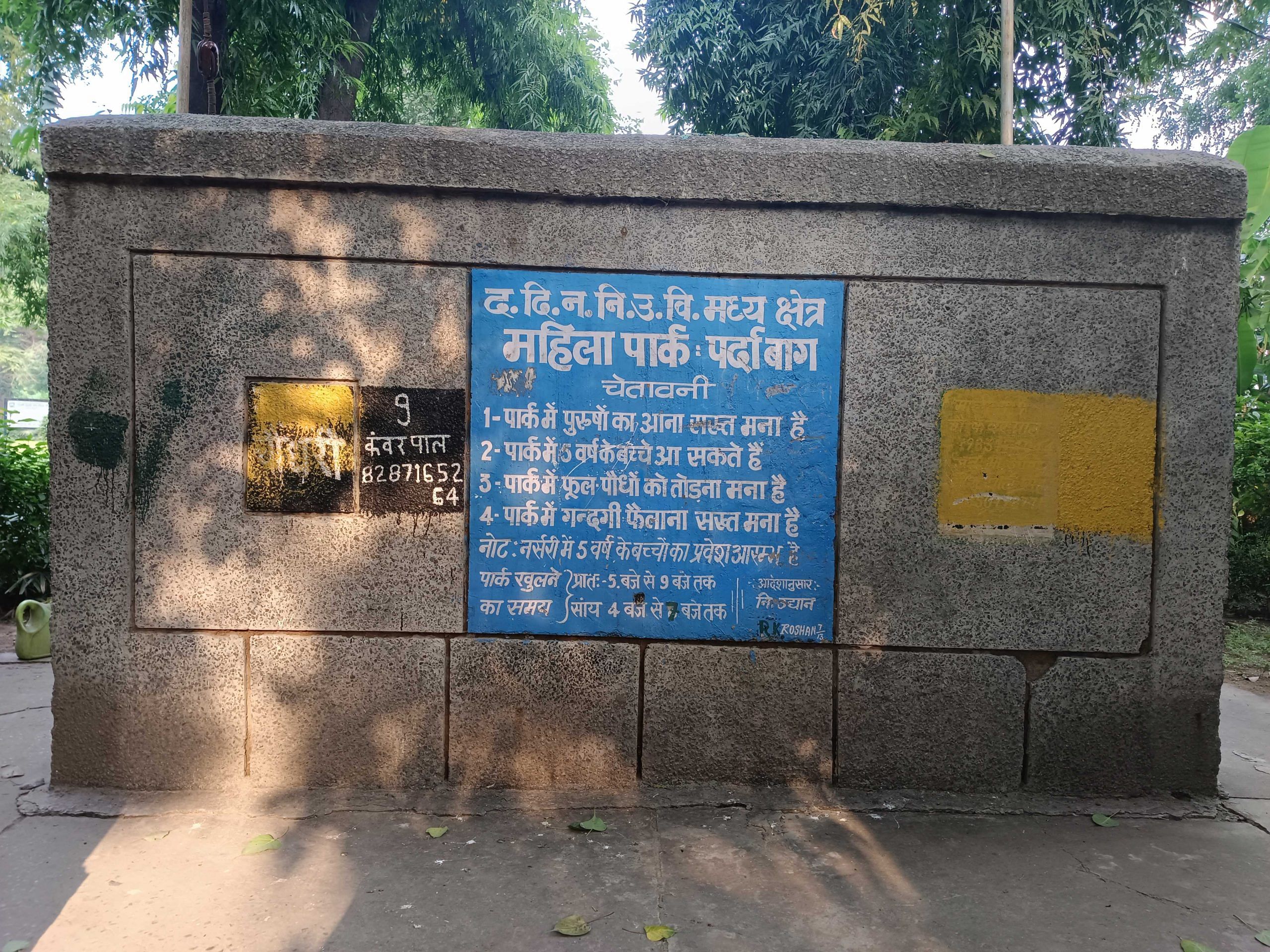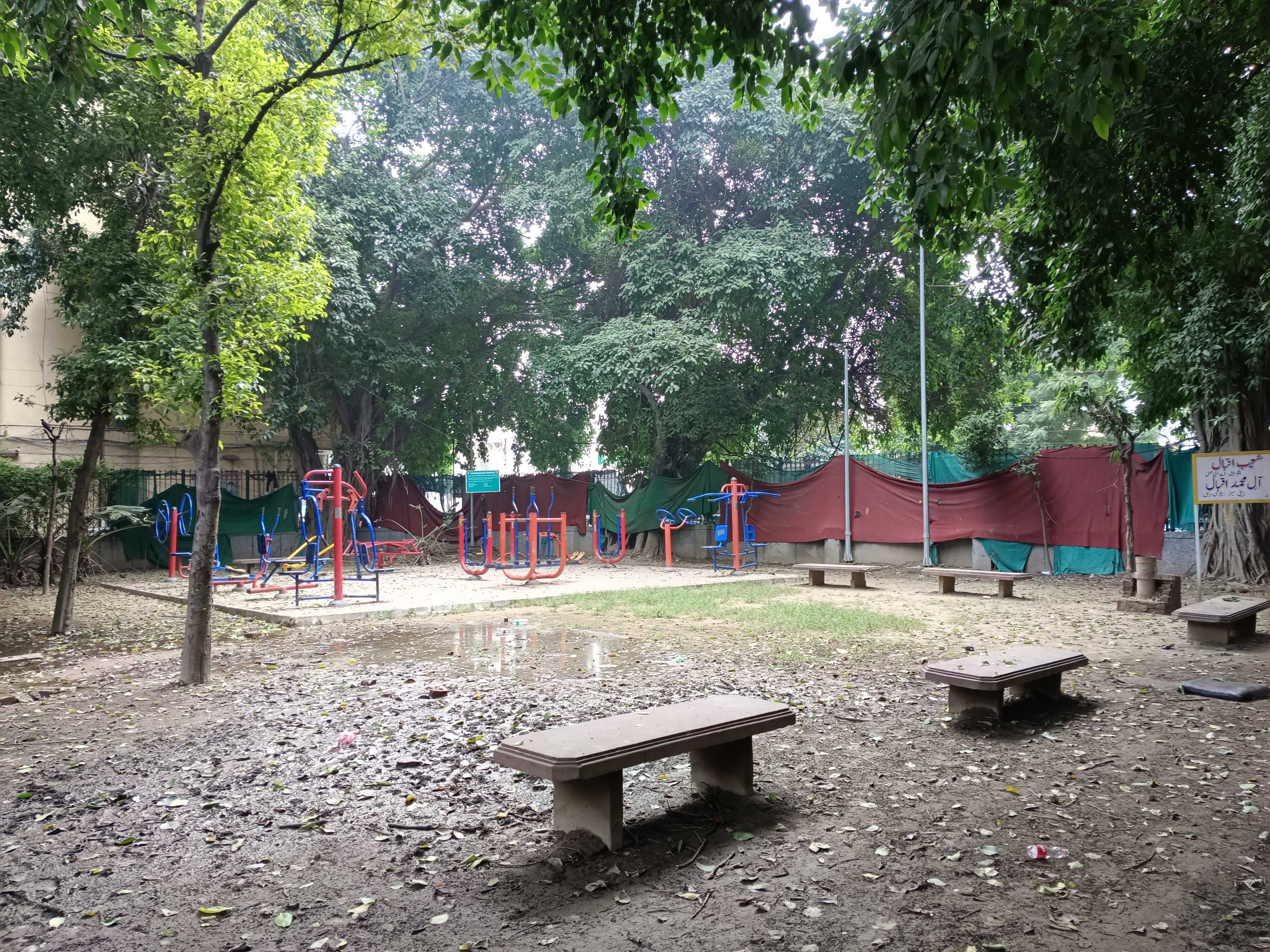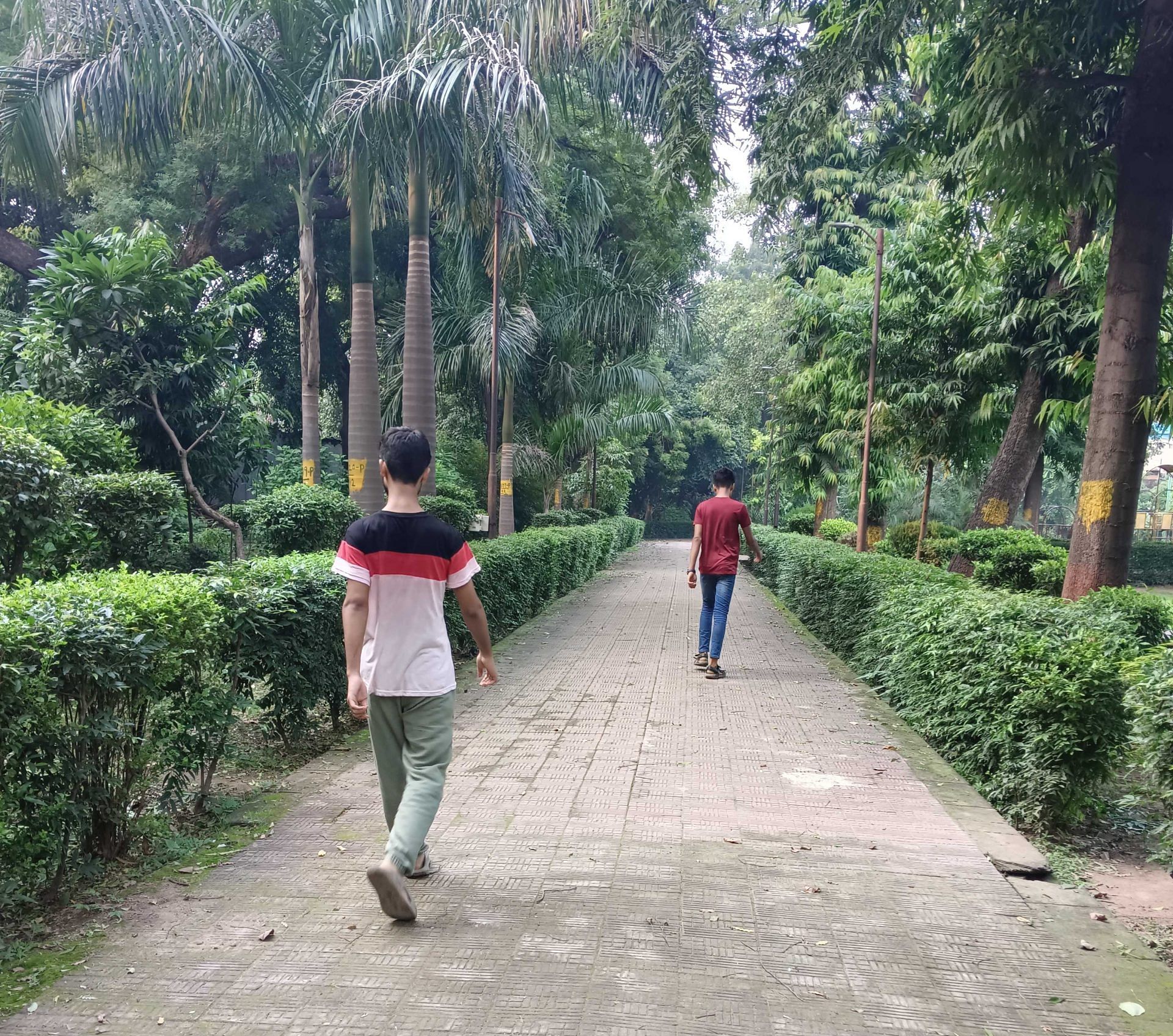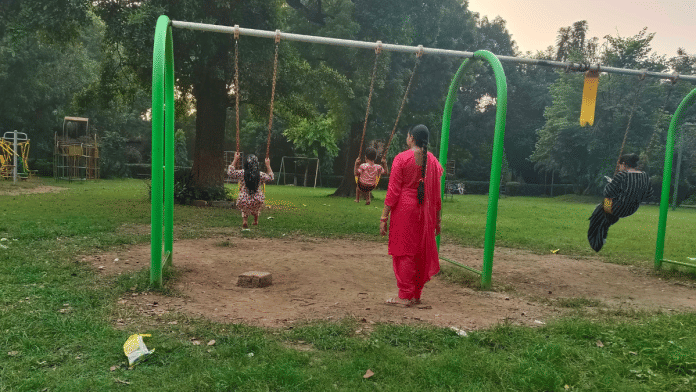Delhi: Twenty-eight-year-old Hafiza Bano enters a park in Old Delhi with her two children at 4 PM every day. Once inside the tall iron gates, she flings her burqa, takes her children toward the swings, plays with them, and chit-chats freely and loudly with other women. Here, she doesn’t have to keep an eye out for men watching her. A couple of hours later, she wears her burqa again and exits the park with her children, eyes down.
Hafiza is one of the many purdah-conscious women in Old Delhi who are reclaiming Mughal-era public parks as their own. Daryaganj’s Parda Bagh is where they take a break, relax, and spend time with themselves without worrying about keeping their veils on.
“This is our place. We can laugh, talk, and play here, no matter our age. No man is going to stare at us, and nobody will complain at home about what we’re doing in a public space,” said Hafiza.
Also called Zanana Bagh, the Daryaganj park is one of the few ‘pink parks’ in Delhi that is exclusive to women visitors, besides Turkman Gate and Jama Masjid’s Mahila Park. These parks greet visitors with vibrant blue signboards at the entrance, clearly outlining: Men not allowed. Children up to five years old are welcome.

While the administration’s push for pink parks is a couple of years old, the concept goes back to 17th-century Mughal-era Delhi when Jahanara and Roshanara, emperor Shah Jahan’s daughters, ruled the roost in beautifying Old Delhi. They built beautiful gardens and over time they became safe spaces for women. Now, in an increasingly unsafe Delhi, these gardens have assumed a new significance.
This is our place. We can laugh, talk, and play here, no matter our age. No man is going to stare at us, and nobody will complain at home about what we’re doing in a public space—Hafiza Bano, 28, from Daryaganj
Historian Swapna Liddle mentioned that all the gardens built in Delhi, whether by Mughal women or men, were primarily intended to create beautiful spaces for themselves and their guests. “These gardens, or baghs, established by Mughal queens were not exclusively for women; their significance evolved in different ways by the 19th century,” she explained.
Parda Bagh is encircled by a walking trail around its periphery; a women’s washroom located to the left of the entry gate. With all its myriad parrots, parakeets, sparrows, bats, and owls nestling in its trees, the park comes alive every evening when women and children come crowding in.
‘Our space’
For many women like Hafiza, Parda Bagh is a cherished sanctuary. It has become a space to embrace womanhood and share stories.
“This park offers us the time that homemakers like us can’t find at home, no matter how hard we try. Here, we can talk, laugh, exercise, and play games without fearing the male gaze since it’s an all-women’s park,” said 42-year-old Asma Ansari, who lives in Daryaganj.
Ansari added that sometimes strangers join in on their conversations or walks. “It feels like we all share similar stories.”
Here, we can talk, laugh, exercise, and play games without fearing the male gaze—Asma Ansari, 42, from Daryaganj.
The Parda Bagh is a small, cosy oasis for Old Delhi women. The other public spaces are teeming with men and women who feel unsafe, residents say. With inebriated men lurking in and around the unkempt parks, female visitors stay away.
“As soon as we step inside the park, we experience a profound sense of freedom and safety. When we go out, we usually need to inform our parents about our plans. However, if they know we’re going to a women’s park, they tend to have fewer questions,” said 21-year-old Samia Jahan, a resident of Daryaganj.
A perpetual problem
Not all pink parks in Delhi are safe havens for women, though.
Jama Masjid’s Mahila Park is rarely ever visited by big groups of merry, chatty women. There are no sign boards giving proper directions to the park, and wayfinding is poor. Men casually and brazenly walk in and sit and sleep under the trees. There are no restrooms, and the rest of the infrastructure barely maintained by authorities. There’s little space to sit and enjoy oneself — only the big Jama Masjid dome is a pleasant sight.
“Earlier, the park used to be filled with girls and women in the evening, but gradually, the number of people has reduced. Now, men often enter, no matter how many times we try to stop them,” said a retired caretaker of Jama Masjid Mahila Park.

As a result, the park is mostly shut now. Men enter freely, lounge around, and leave.
“In the past, women would come here in the evenings to sit and chat. Sometimes, after shopping at Jama Masjid, they would rest here. Perhaps when winter arrives, women will start coming back to enjoy the sunlight,” said Abdul Khan, a 56-year-old vendor who sells dates outside the Mahila Park gate.
Disregard for rules seems to be the norm in another pink park—Turkman Gate’s Mahila Park—as well.
“We try to stop people from entering, but when we’re not around, local residents often break the gate lock to get in and drink,” said MCD supervisor Suraj Chaudhary.
Many young boys and men in the pink park said they were just walking around.
“We just came inside to take a walk,” said a young boy accompanying his friends.

From 17th century to now
In April 2023, the Municipal Corporation of Delhi (MCD) decided to develop pink parks in each of the 250 municipal wards. These parks were designed to include toilets, CCTV cameras, open gym facilities, and vibrant graffiti, serving as exclusive spaces for women.
ThePrint reached out to the MCD for an update but has yet to receive a response.
Many of these structures were later demolished, remodelled, and rebuilt into existing spaces.
Where Parda Bagh stands today, there was once a caravanserai for travellers to rest, according to Old Delhi legend. Heritage experts in Jama Masjid suggest that the caravanserai was demolished by the British around 1860, after which a town hall, a Company Bagh for men, and Parda Bagh for women were established.
The British followed in the footsteps of Mughal kings and princesses, who beautified Delhi with lush gardens.
Where Parda Bagh stands today, there was once a caravanserai. Heritage experts suggest that it was demolished by the British around 1860, after which a town hall, a Company Bagh for men, and Parda Bagh for women were established.
“Through their contributions and by making architectures and these types of gardens, they ensured that their names and accomplishments would be remembered for generations to come,” said Liddle. “Delhi today is much greener than it was during the Mughal era, when the weather was dry and arid.”
She highlighted that such spaces continue to be an integral part of the city’s history and charm today.
Govt must do more
While walking through the narrow lane of Turkman Gate Mahila Park, 60-year-old Binita Rani noted that it often floods with rainwater, and even after it drains, the ground remains muddy, discouraging many from visiting. “Since the jhule (gym equipment) were installed, not much has changed. People will only come if the park is nice and well-maintained,” she added.
While Daryaganj’s Parda Bagh has become a welcoming space for many women, complete with washrooms and an outdoor gym, women in other parks are still searching for better facilities.
“We often come here to sit, but the condition of the park sometimes makes us reluctant to return. The government needs to do more, like building proper washrooms and imposing fines on men who enter, so that more women feel comfortable coming here,” said Sarita, walking out of the narrow lane with Binita Rani.
(Edited by Humra Laeeq)






